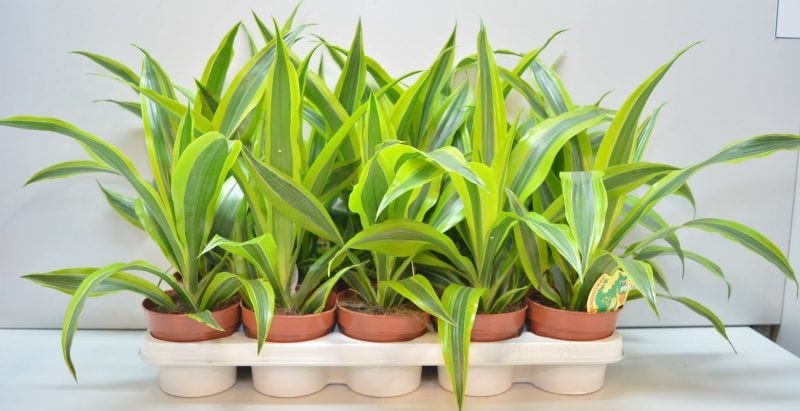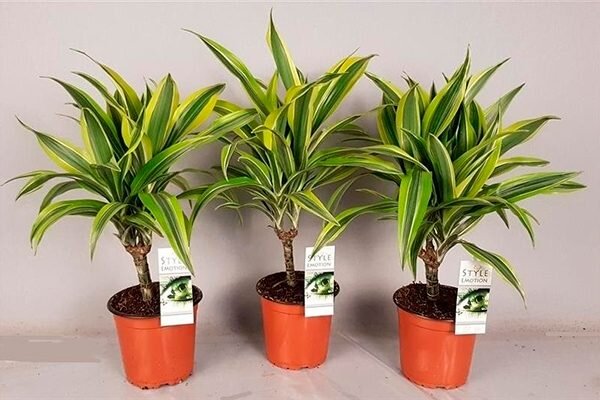Dracaena lemon lime is one of the common varieties of fragrant dracaena. Comes from the Asparagus family. Grows in tropical areas of South America, Australia, Africa, Spain, India and the Canary Islands.
It is an evergreen plant with one or more stems. It has an external resemblance to a palm tree. A distinctive feature is the dense, pointed, bright yellow-green leaves.
Dracaena lemon lime is useful for humans because… purifies the air of hazardous chemicals such as formaldehyde.
Unpretentious to indoor growing conditions. Requires minimal care. Grows well in residential buildings and public spaces. Usually, the height of a home flower reaches 1 m, in rare cases – 2 m or higher.
Table of Contents
Getting To Know The Dracaena Lemon Lime
After purchasing, it is important to carefully deliver the Dracaena lemon lime home. It is better not to buy a flower in winter, because… low temperatures can cause irreparable harm to the plant.
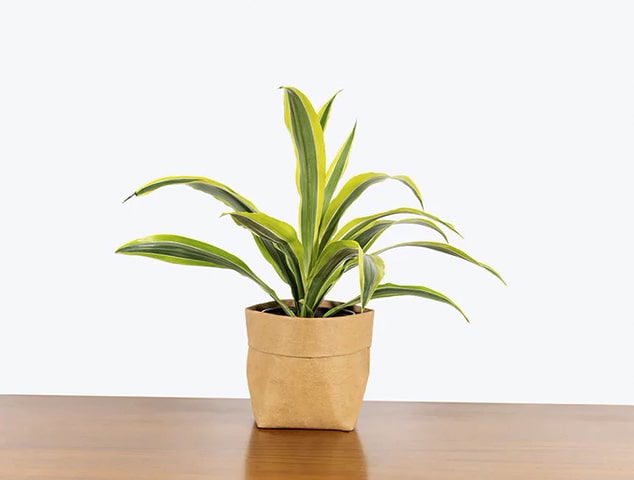
It is optimal to transport the Dracaena lemon lime at an air temperature of at least +10°C. If there is a need to transport flower crops at lower degrees, use insulation made of paper, a plastic bag, or thermoplex.
For 2 weeks, the plant is placed in so-called quarantine away from other domestic flowers. During this time, the Dracaena lemon lime adapts after transportation and can be transplanted into a new container.
To do this, you will need a new pot larger than a store container, fertile neutral or slightly acidic loose soil, and drainage material.
Care Conditions
Even though Dracaena lemon lime adapts to almost any living conditions, for its harmonious development you will need to follow some rules:
- Temperature. The flower is thermophilic. The optimal temperature is +25-27°C in summer and +16-18°C in winter.
- Indoor humidity. Dracaena comes from the tropics, so it needs high humidity. The acceptable range is 50-80%. If the readings are lower, spraying is required.
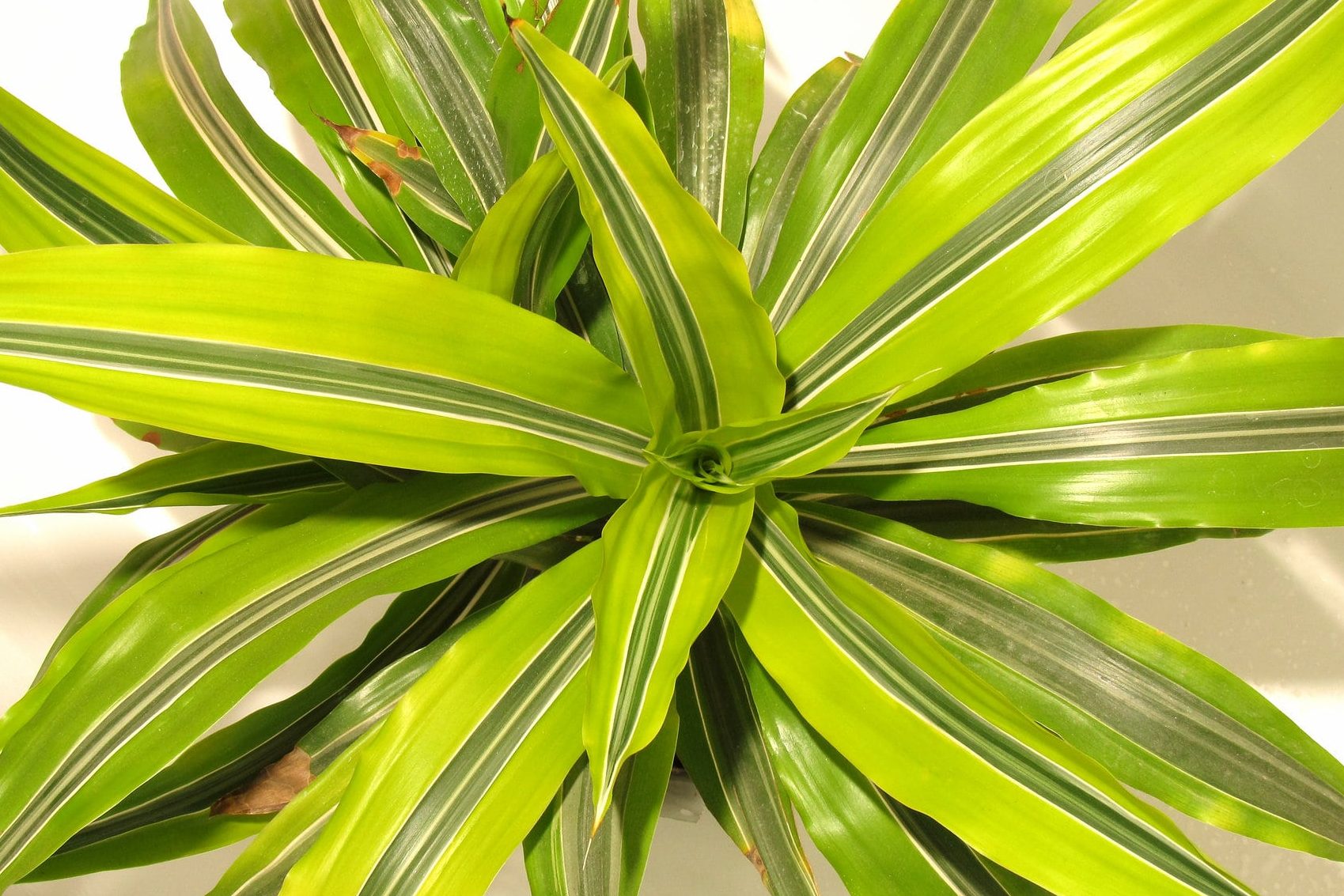
- Lighting. The flower is placed on the window sills of north-eastern and western windows or away from south-facing windows. Moderate diffuse lighting is necessary, but not its absence.
- Watering frequency. On average, 2-3 times a week in the warm season, 1-2 times a week in the cold season. Depending on the air temperature, watering must be adjusted.
- Soil composition. Neutral or slightly acidic soil with added sand should be loose and nutritious.
- Trimming. Optional, but better in spring to create a voluminous crown.
- Rest period. Celebrated during the cold season, in winter.
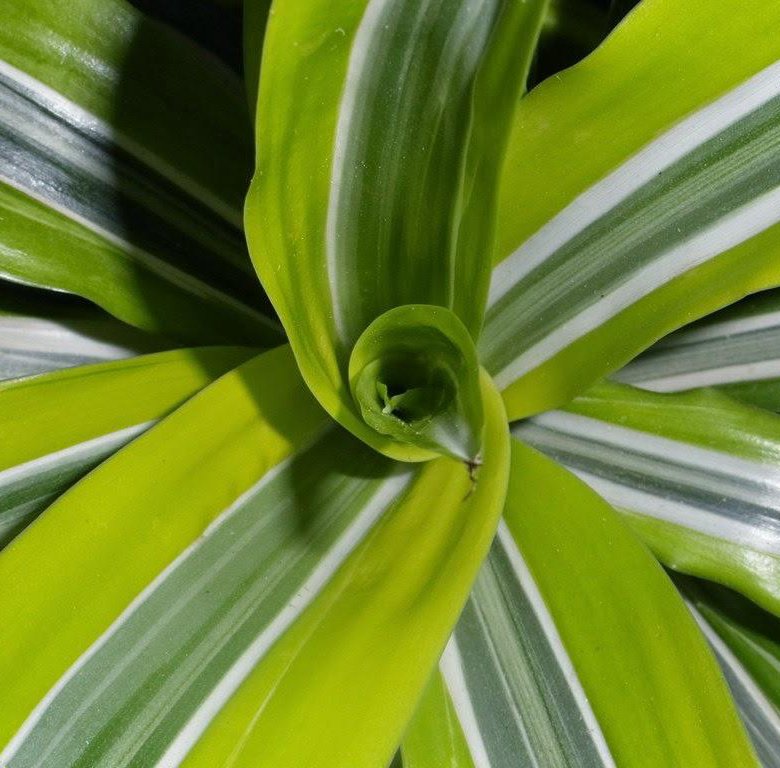
- Bloom. At home, it blooms extremely rarely, approximately once every 7-10 years. It blooms with small white flowers, united in inflorescences.
- Fertilizer application. From mid-spring to mid-autumn – once every 10-14 days. In winter, you can feed it once every 30-35 days or not fertilize it.
- Transplant. On average, once every 2-3 years in March. At the time of transplantation, the roots should become cramped in the pot.
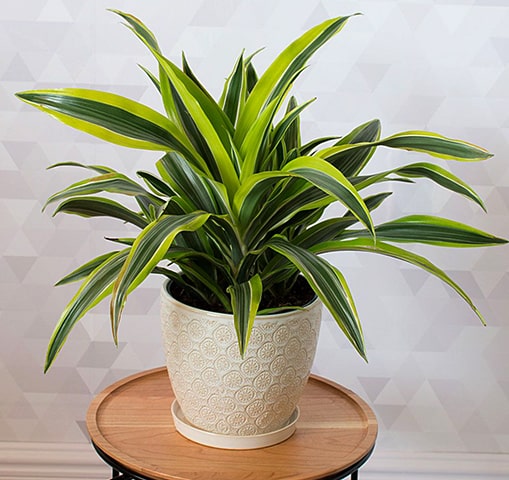
Growing Dracaena Indoor
Dracaena Lemon Lime withstands any home conditions. Even with care violations, the flower quickly recovers. But for the development of beautiful succulent variegated leaves, there are certain requirements.
Location And Lighting
Diffused light is required. The leaves of the plant mustn’t be exposed to direct sunlight. A flower pot can be placed on the windowsill of a northeast or west window.
If the windows face south, the Dracaena lemon lime is placed on the floor or in any part of the room at a distance of 2 m from the windows. The main thing is not to put culture in dark corners.
The flower can reach for the sun’s rays, so as necessary it is turned with different sides towards the light source.
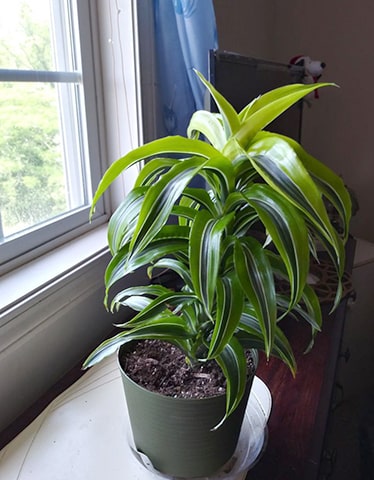
The Soil
A light nutrient substrate is suitable for cultivation. It can be purchased ready-made or made independently from the following components:
- Sod land.
- Leaf soil.
- Humus.
- Peat.
- Sand.
Everything is mixed in equal proportions. A thick layer of drainage, such as expanded clay, is placed at the bottom of the pot.
Air Temperature and Humidity
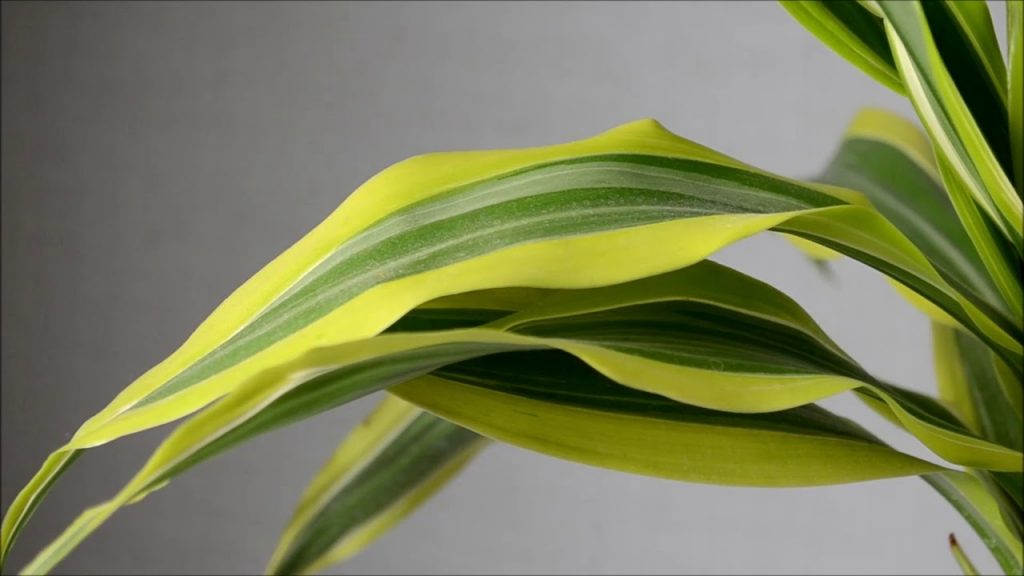
Dracaena lemon lime does not like cold and drafts. The average air temperature throughout the year should be from +16 to +27°C. Moreover, in the warm season, the indicators vary from +25 to +27°C, and in the cold season – from +16 to +18°C.
The Dracaena lemon lime needs humid air ( 50-80% ) or frequent spraying. At the same time, constant humidity above 90% leads to rotting of the plant.
It is recommended to wipe the leaves from dust weekly with a damp, clean cloth or shower the flower with warm water.
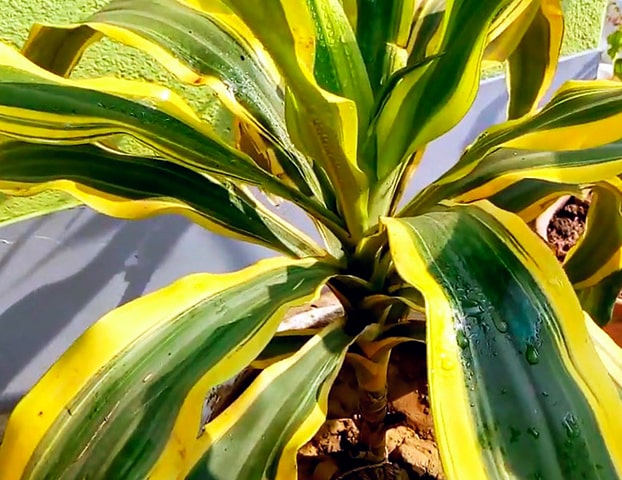
Watering
In hot months, Dracaena Lemon Lime needs watering 2-3 times a week, provided that the top layer of soil is dry but not cracked. During the cold season, watering is reduced to 1-2 times a week.
If there is sufficient humidity, you can get by with watering once a week. The water that has drained into the pan is removed after each watering.
Trimming
When the plant stretches out, its trunk becomes bare and becomes woody, and the leaves remain only at the top.
The flower should be trimmed only for decorative purposes to branch the trunk. Preferably in spring, in March.
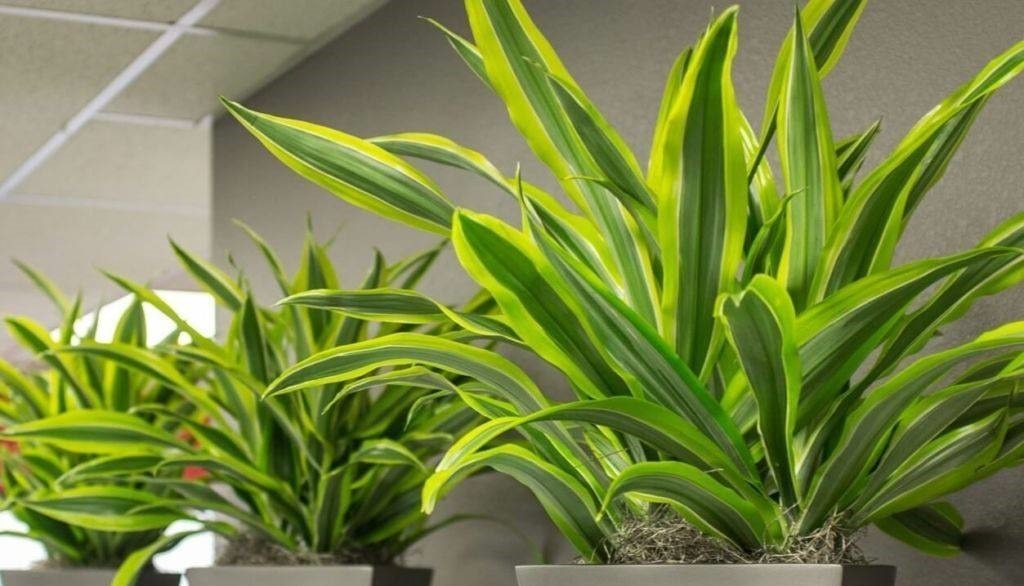
It is better to perform pruning with a sharp stationery knife anywhere on the trunk. The cut site is sealed with paraffin. The cut shoots take root and grow new plants.
Top Dressing
To fertilize Dracaena lemon lime, special products for palm trees and succulents in the liquid or granular form are suitable, the succulents and cacti fertilizer is recommended. They should be rich in nitrogen, potassium, and phosphorus.
Mineral fertilizing is applied from mid-spring to mid-autumn once every 10-14 days. In winter, the flower does not particularly need feeding, but you can apply the nutrient once every 30-35 days.
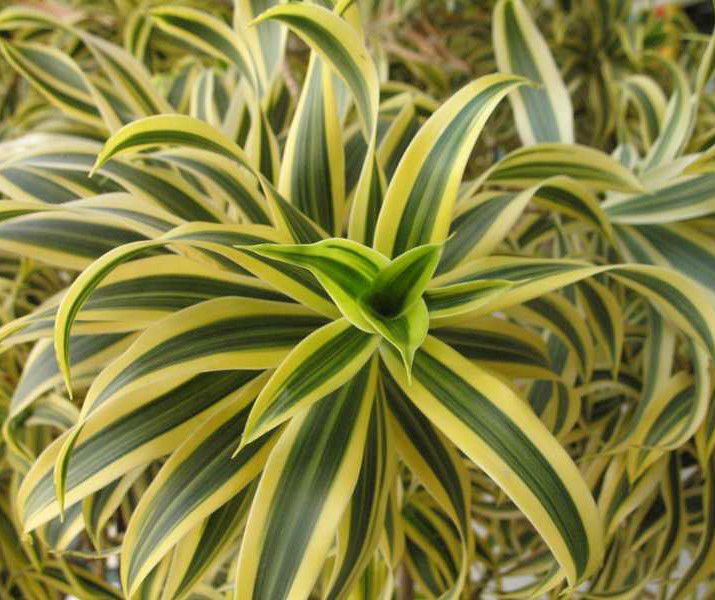
Bloom
When grown indoors, Dracaena lemon lime may bloom in rare cases. At the same time, small white flowers are formed on the plant, united in inflorescences.
Flowers can appear once per dracaena life cycle, i.e. Once every 7-10 years, since the culture lives up to 15 years.
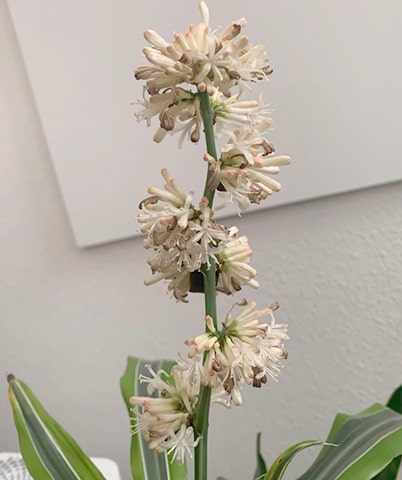
Transfer
The flower does not need annual replanting. The signal to change the pot is the appearance of roots above the soil surface. Usually this happens once every 2-3 years.
It is recommended to transplant in March during the period of active growth of Dracaena lemon lime using the transshipment method.
The roots cannot be washed, but they must be carefully freed from the old substrate. All dry protruding roots are trimmed with scissors.
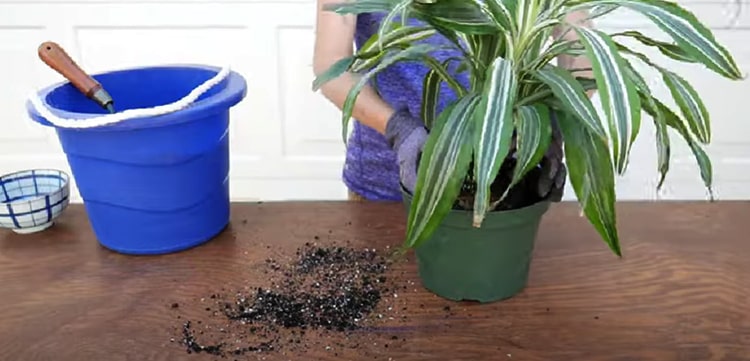
The pot can be made of any material. The main thing is with holes at the bottom. Each new container should be 2-3 cm larger than the previous one.
Care Features for All Seasons
In summer, the flower needs regular watering, fertilizing, warm air within +25-27°C, and high humidity – 50-80%. To maintain beauty and health, the leaves are wiped from dust with a clean cloth or washed in the shower once a week.
Dracaena lemon lime is watered after the top layer of soil has dried, but cracks are not allowed to appear on it. Mineral fertilizers are applied from mid-spring to mid-autumn once every 10-14 days. In winter, watering and fertilizing are reduced. The plant tolerates wintering well at temperatures of
+16-18°C . Spraying and wiping of leaves is carried out all year round.
Plant Problems and Diseases
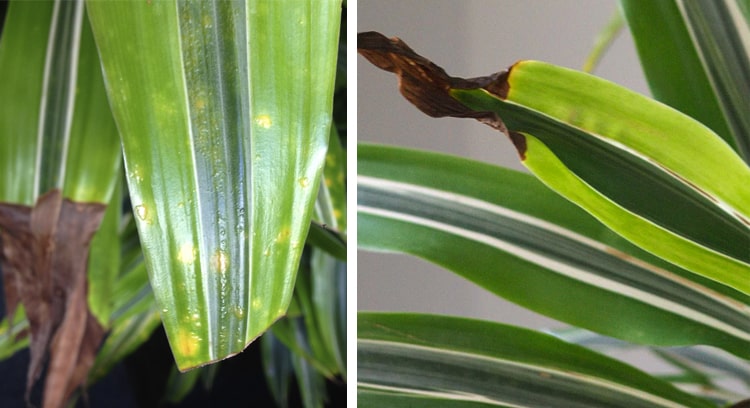
- The leaves turn yellow and dry. Occurs due to lack of moisture. It is necessary to regularly spray the crown and arrange watering.
- The leaves turn black and wet spots appear. Reason: excess moisture. It is necessary to reduce spraying, regularly ventilate the room, and adjust watering.
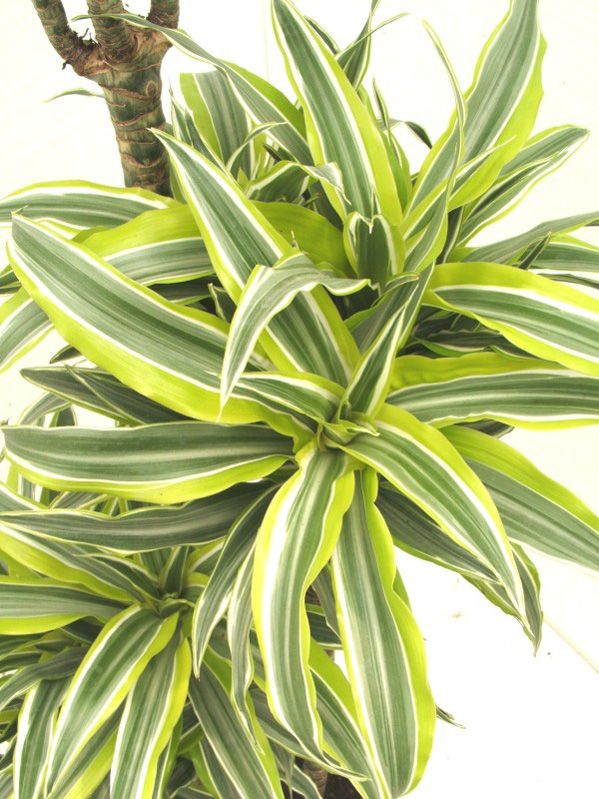
- Curling of leaves. Deformation occurs due to prolonged exposure to cold. To eliminate the problem, Dracaena lemon lime is placed in a warm, humid place.
- The appearance of pale spots, which are soon covered with fluffy piles with black dots. Gray rot develops. It is necessary to cut off the affected areas, water and spray the flower with a solution of Fundazol.
Pests
There can be several reasons for the appearance of parasites:
- Weakened immunity.
- Infection from other indoor plants.
- Infection from cut bouquets.
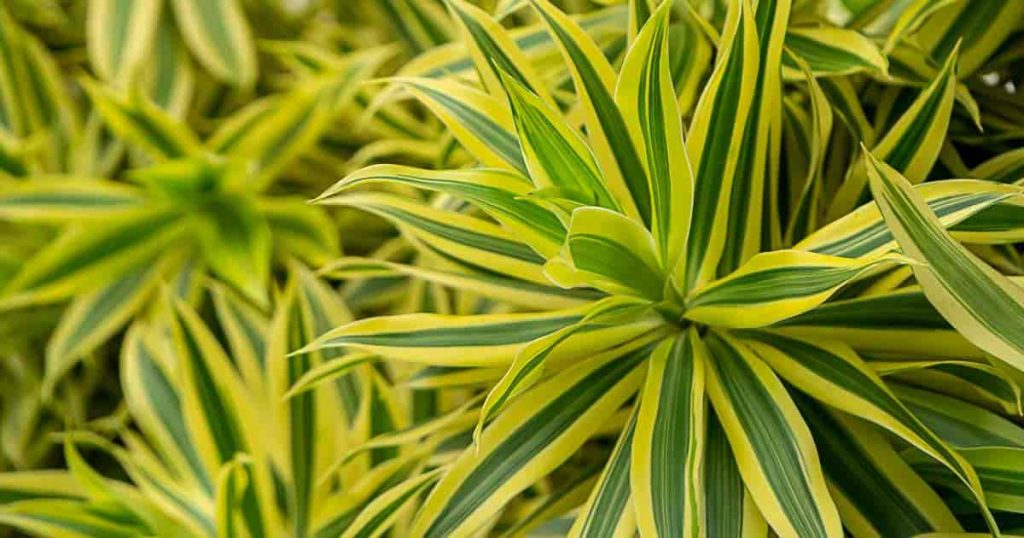
Most often found on Dracaenas:
- Aphid. Causes wilting of leaves, especially young ones. There is stickiness. Colonies of small white insects form on the underside of the leaves. For the fight they use: Intavir, Fitoverm, and Actellik.
- Thrips. Suck the juice from the leaves, leaving long light yellow stripes with a silvery tint. Small black insects can be found under the leaves. Double treatment of the entire plant and soil with Iskra, Aktara, and Vertimek will help against thrips.
- Spider mite. Leaves cobwebs and brown punctures on the backs of leaves and roots. The leaves of infected dracaena turn yellow, thin, and curl. Treatment with Masai, Vertimek, and Sunmite is required.
Conclusion
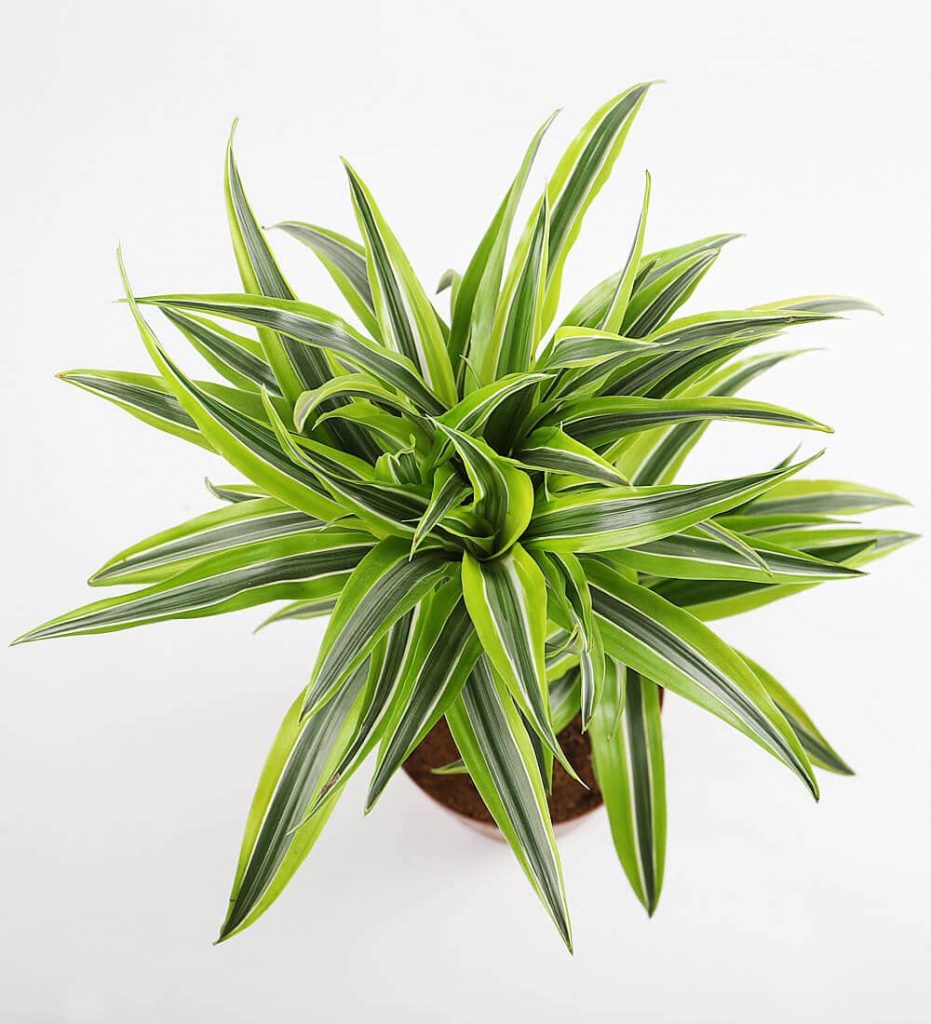
Dracaena Lemon Lime is an unpretentious plant. Suitable for landscaping apartments, office premises, and other private or public facilities.
Thanks to its variegated, bright leaves, easy care, and beneficial properties, this flower is popular. The most inexperienced gardener can grow Dracaena without any effort.

